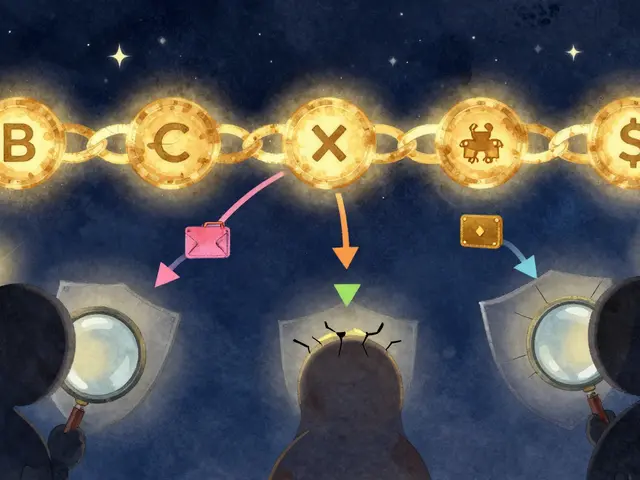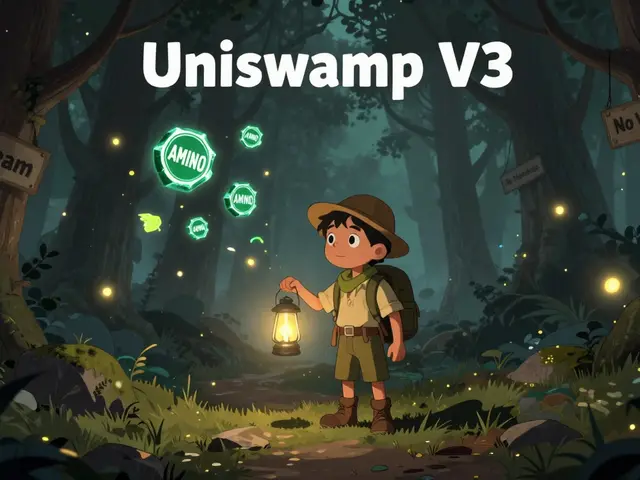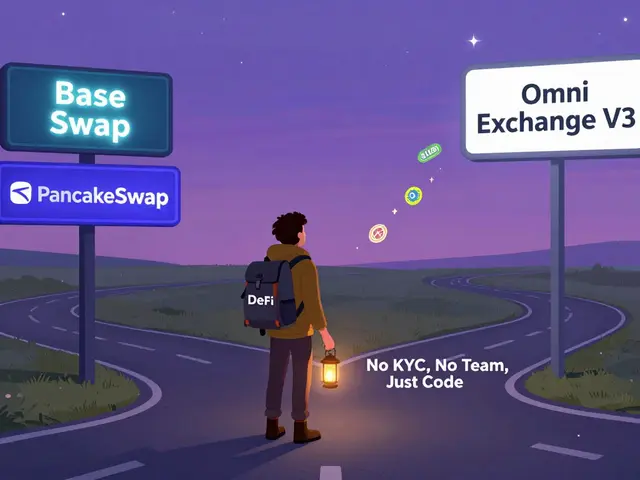Security Token Market Growth Calculator
Market Growth Projection
Enter values and click Calculate to see projected market size.
Quick Takeaways
- Security token market could balloon from $250bn (2024) to $30tn by 2030 - a 45%+ CAGR.
- Regulatory clarity in the U.S. and Asia‑Pacific drives institutional demand.
- Permissionless blockchains outpace permissioned ones, delivering higher liquidity.
- Real‑estate leads tokenized assets today, but commodities grow fastest (50% CAGR).
- North America holds the biggest share; APAC shows the steepest revenue growth.
Security tokens are turning the traditional finance world upside‑down. By turning stocks, bonds, real‑estate and even commodities into programmable digital tokens, the industry promises faster settlement, fractional ownership and built‑in compliance. But how big will this market really become? And what will it look like in 2030? Let’s break down the numbers, the forces pushing the growth, and the risks you need to watch.
What Exactly Is a Security Token?
Security Token is a digital representation of a traditional financial security that lives on a blockchain, offering fractional ownership and programmable rights. Unlike utility tokens, security tokens are subject to securities law, meaning they must be registered or qualify for an exemption. The key advantage is that smart contracts can automate compliance-think automatic dividend payouts, voting rights, or lock‑up periods.
Market Size Forecasts: From $250bn to $30tn?
Different research firms paint wildly different pictures. The Security Token Market organization forecasts a jump to $30trillion by 2030, driven by aggressive institutional adoption. By contrast, McKinsey’s more cautious estimate lands at $2trillion. The gap isn’t random; it reflects three variables:
- Scope of assets counted (stocks, bonds, real‑estate, commodities, stablecoins).
- Assumed regulatory speed - fast clarity fuels exponential growth.
- Technology adoption rates - permissionless blockchain liquidity versus siloed permissioned networks.
Even the conservative “broader tokenization” estimate (about $13bn by 2030) suggests a healthy market. The real signal is the 45.46% CAGR for asset tokenization from Mordor Intelligence, which dwarfs the 18.3% CAGR for the broader tokenization sector.

Why the Market Is About to Explode
Three pillars are pushing the acceleration:
- Regulatory clarity. The U.S. SEC now openly classifies many tokens as securities, requiring registration but also providing legal certainty. In Asia‑Pacific, India’s Reserve Bank has approved card‑on‑file tokenization, and the National Payments Corporation of India rolled out token systems for RuPay cards, creating a supportive environment.
- Institutional money. In 2024, professional investors owned 69.80% of tokenized capital. Heavyweights like BlackRock and Franklin Templeton have launched on‑chain liquidity funds and tokenized products, signalling that the “crypto‑only” stigma is disappearing.
- Technology breakthroughs. Interoperability protocols (e.g., Polkadot, Cosmos) and layer‑2 scaling solutions are making permissionless chains cheaper and faster, while on‑premise deployments still dominate infrastructure choices (60% share).
Asset Classes and Regional Hotspots
Real‑estate remains the flagship tokenized asset, holding 30.5% of the market in 2024. However, commodities are the fastest‑growing segment, posting a 50.10% CAGR. Tokenized stocks and bonds together already exceed $50bn, and stablecoins (essentially tokenized dollars) add another $200bn, creating a $250bn RWA ecosystem.
Geographically:
- North America: 36.45% market share in 2024, thanks to strong STO pipelines and a mature regulatory framework.
- Asia‑Pacific: Highest revenue CAGR, driven by BFSI adoption, Indian card tokenization, and growing interest from Chinese and Japanese asset managers.
- Middle East & Africa: Projected 27.52% CAGR, propelled by sovereign wealth funds experimenting with tokenized real‑estate.
Permissioned vs Permissionless Blockchains
Choosing the right blockchain architecture is a make‑or‑break decision. Permissioned networks (e.g., Hyperledger) give enterprises control over who can write data, but they usually suffer from lower liquidity and higher intermediation costs. Permissionless networks (e.g., Ethereum, Solana) open the market to a global pool of traders, driving a 53.20% CAGR for solutions built on them.
| Attribute | Permissioned | Permissionless |
|---|---|---|
| Governance | Consortium‑controlled | Open community |
| Liquidity | Limited, often institutional | High, global market makers |
| Compliance Integration | Built‑in private KYC/AML | Smart‑contract‑based compliance layers |
| Transaction Speed | Fast (private network) | Varies; scaling solutions improve speed |
| Cost per Tx | Higher (maintain nodes) | Lower on high‑throughput chains |
Most new STOs are gravitating toward permissionless environments because the larger liquidity pool reduces price slippage and helps meet the “continuous market” requirement of many regulators.

Implementation Challenges You Can’t Ignore
Even with the upside, tokenization is not a plug‑and‑play solution. Common hurdles include:
- Regulatory compliance. STOs must register with securities authorities, file prospectuses, and maintain ongoing reporting. Failure to do so can trigger enforcement actions.
- Fractional ownership mechanics. Smart contracts need to enforce rights like voting, dividend distribution, and lock‑up periods, which adds development complexity.
- Cross‑border legal frameworks. Different jurisdictions treat tokenized assets differently, creating a patchwork of tax and custody rules.
- Interoperability. Moving tokens between permissioned and permissionless networks requires bridges that are still maturing and can be points of failure.
Addressing these issues typically means partnering with legal specialists, compliance platforms (e.g., Polymath, Securitize) and blockchain infrastructure providers that offer audited smart‑contract libraries.
What the Landscape Might Look Like in 2030
Two scenarios dominate analysts’ forecasts:
- Conservative (≈$2trillion). Regulatory lag slows adoption, permissioned solutions dominate, and tokenization remains a niche for high‑net‑worth investors.
- Transformational (≈$30trillion). Full SEC clarity, global interoperable standards, and mainstream retail participation drive explosive growth. Tokenized assets become a core component of diversified portfolios, and secondary markets enable near‑instant settlement.
Key indicators to watch:
- Number of SEC‑registered STOs per year.
- Liquidity depth on major permissionless exchanges (e.g., Uniswap, Serum) for security tokens.
- Adoption of cross‑chain bridges with proven security audits.
- Institutional fund allocations to tokenized assets in public filings.
Even the lower‑bound scenario still outpaces traditional asset‑class growth rates, meaning security tokens will likely become a staple for forward‑looking fund managers.
Next Steps for Investors and Issuers
If you’re an investor, start by familiarizing yourself with the regulatory status of security tokens in your jurisdiction and consider allocating a small percentage of your portfolio to tokenized funds offered by reputable managers. For issuers, the fastest path to market is to partner with an experienced tokenization platform that handles KYC/AML, smart‑contract audits, and SEC filing support.
In both cases, keep an eye on the evolution of interoperability standards-projects like the Interoperable Token Standard (ITS) aim to make moving assets between chains as easy as moving cash between banks.
Frequently Asked Questions
Are security tokens the same as cryptocurrencies?
No. Security tokens are regulated securities that represent ownership in real‑world assets, while most cryptocurrencies are utility tokens without a claim on profits or assets.
Do I need a broker to buy security tokens?
You can purchase directly through licensed token platforms or through traditional brokers that have added token‑trading desks. The key is to ensure the platform is registered for STOs.
What’s the biggest risk right now?
Regulatory uncertainty. While the U.S. is clarifying rules, other regions lag, creating compliance gaps that could affect cross‑border liquidity.
Which asset class will tokenize first?
Real‑estate remains the leader because fractional ownership solves a historic liquidity problem. Commodities are catching up fast thanks to tokenized futures.
How can I assess a security token offering?
Check the prospectus for SEC registration, review the smart‑contract audit report, verify the token’s legal entity, and evaluate the underlying asset’s fundamentals.







Aniket Sable
October 10, 2025 AT 06:41Santosh harnaval
October 10, 2025 AT 18:42Claymore girl Claymoreanime
October 11, 2025 AT 08:56Will Atkinson
October 11, 2025 AT 13:50monica thomas
October 11, 2025 AT 19:35Edwin Davis
October 12, 2025 AT 11:02emma bullivant
October 13, 2025 AT 00:42Michael Hagerman
October 13, 2025 AT 17:14